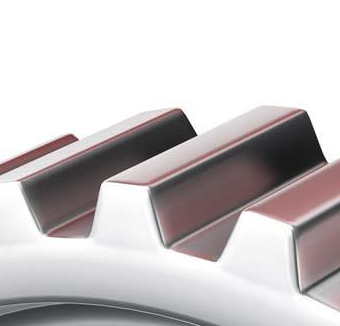Gear drives are mechanical power transmission systems that move motion and power from one spinning component to another by means of gears. It comprises two or more gears with different-sized teeth that mesh together to transfer power and torque. The gear drive system is frequently utilized in machinery and vehicles, including automobiles, trucks, and heavy machinery, particularly in situations where there is a requirement for high torque and power transmission. Compressors, pumps, and generators are a few examples of industrial machinery that utilizes them.
Pros
Transmission of Energy Effectively
The direct mechanical coupling of a gear drive ensures a smooth and efficient transfer of power and torque from one shaft to another.
Superior load-bearing capacity
Because gear drives are able to transmit high loads and can manage heavy-duty applications, they are ideally suited for use in the machinery and equipment used in industrial settings.
Resilient and Long-Lasting
Gear drives are constructed from sturdy materials like steel, and are built to survive for many years. Compared to some other forms of power transmission systems, they require less maintenance and have a longer lifespan.
Wide Range of Ratios
Gear drives come in different sizes and can be built to offer a wide range of gear ratios. This gives system designers more options when making designs that meet certain power and speed requirements.

Cons
Vibration and Noise
In some circumstances, the noise and vibrations generated by gear drives may be unpleasant. The sound produced by the meshing of the gear teeth can be annoying in some contexts, such as in consumer products.
Low Flexibility
When it comes to adapting to shifts in the power transmission system, gear drives aren't always the most flexible option. The manufacturing and installation of new gears are necessary for any modifications to the gear drive system, which can be costly and time-consuming.
Needs Lubrication
For efficient operation and to keep the gears from deteriorating, gear drives need to be regularly lubricated. When the gears are not properly lubricated, they can soon wear out, which lowers their performance and shortens their lives.
FAQ's
what are the advantages of gear drive over the belt and chain drives?
Gear drives have a number of benefits over belt and chain drives. Gear drives can transfer a lot of power and have good transmission efficiency. They are more durable and can transmit motion over short shaft center distances. More transmission efficiency is achieved by gear drives because they experience less friction loss than belt drives. Furthermore, as long as the axes continue to run parallel to one another, gear drives are resistant to angular misalignment.
what are the most common types of gear drives?
There are many different kinds of gear drives, but the most popular ones include bevel gears, spur gears, helical gears, worm gears, and planetary gears. Power transfer efficiency is improved with parallel gear drives, therefore they see widespread use in industries that rely on mechanical machinery.
which gear drive is most efficient
The most effective form of gear drive is helical gearing. Because of the smooth transitions between teeth, helical gears are able to deliver relatively high torque with minimal torque ripple.
what factors affect gear efficiency?
The effectiveness of a gear drive system depends on a number of variables. Gear efficiency can be affected by a variety of parameters, including coatings, surface treatments, lubrication, and geometry. Another significant element that may impact gearbox efficiency is lubricant viscosity. Gear efficiency can also be impacted by the driving wheel's tooth count and pressure angle. Gear efficiency may also be impacted by frictional losses linked to gear size, reduction ratio, and coefficient of friction. Oil composition, temperature difference, turbulence, and shock loads are additional variables that might influence gearbox operation.







0 Comments
For comments please reply here.......